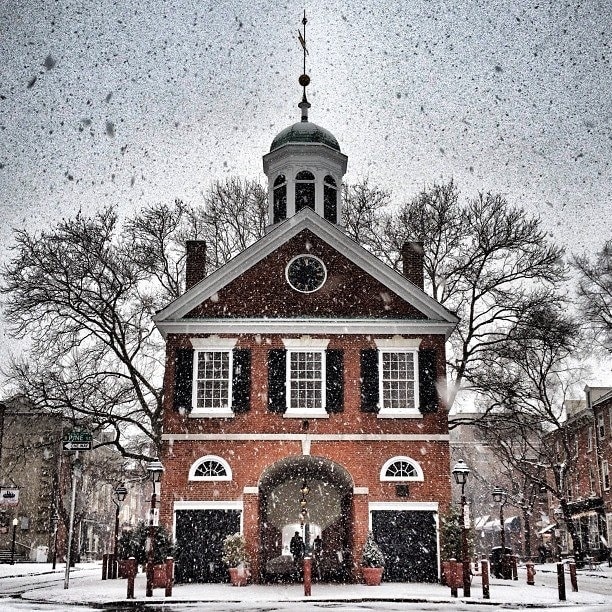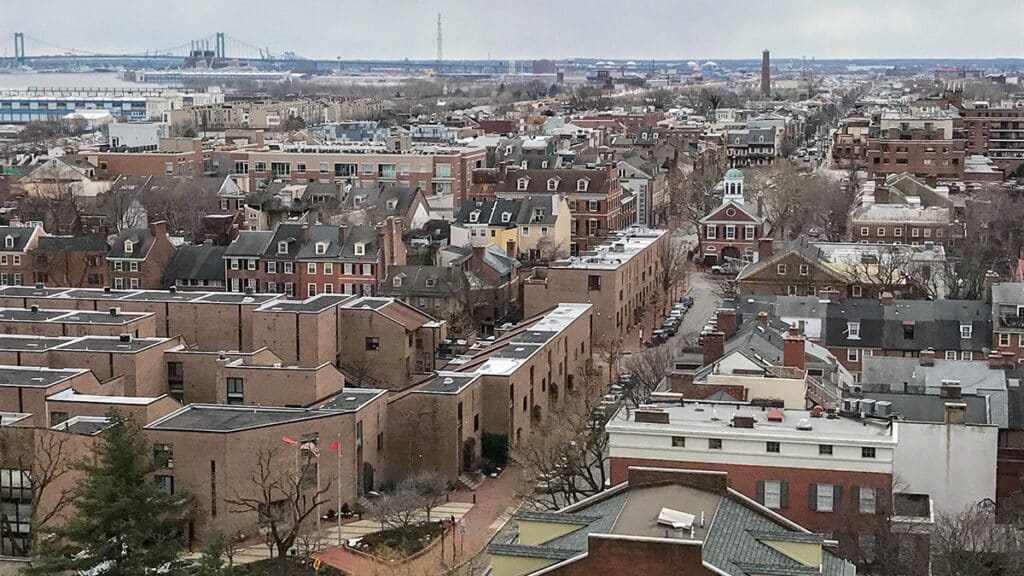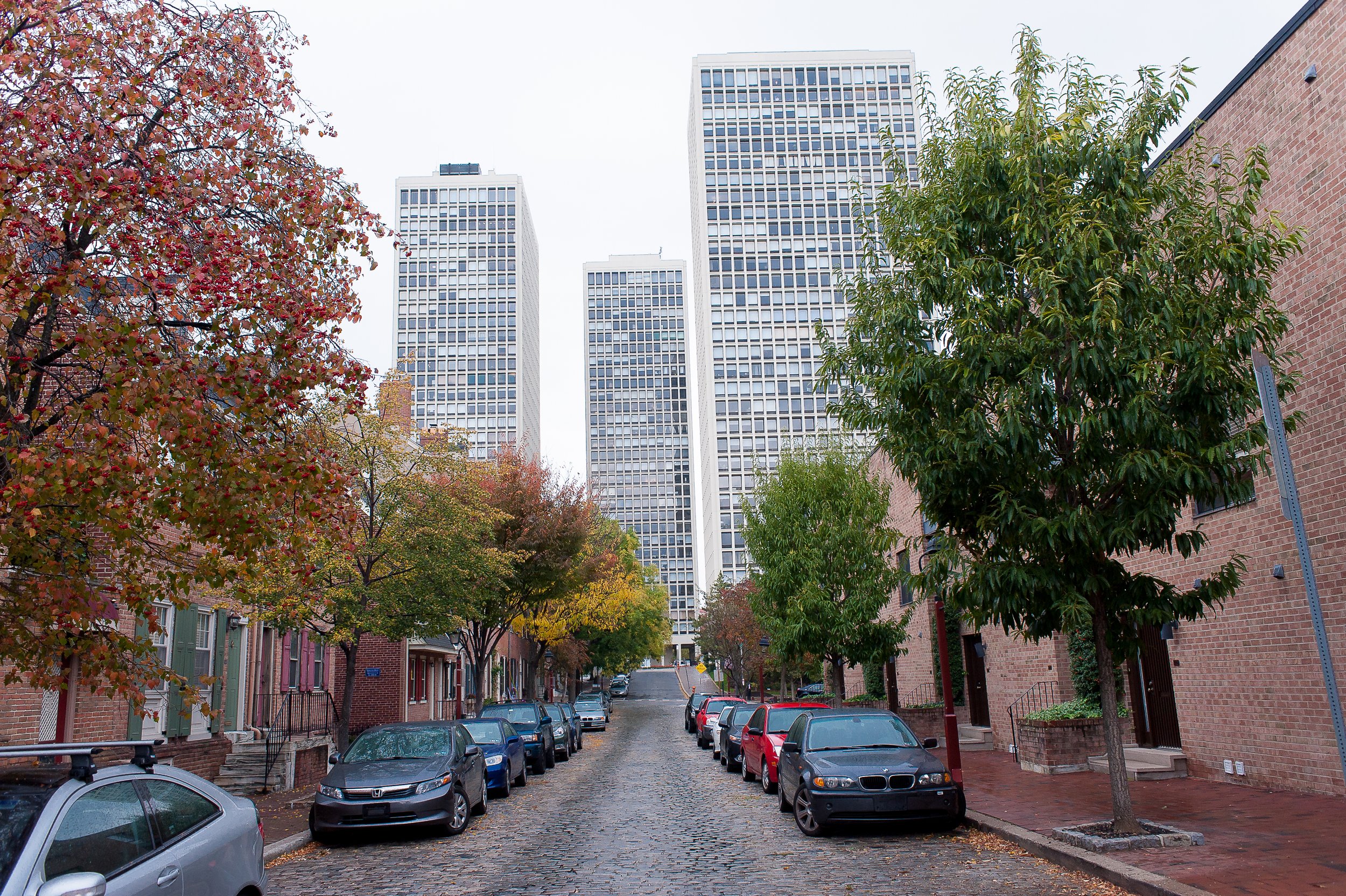Society Hill: A Historic Neighborhood in Philadelphia with Modern Charm
Society Hill, located in Center City Philadelphia, is known for its well-preserved 18th and 19th-century buildings; it’s one of the oldest residential neighborhoods in Philadelphia. In recent years, Society Hill has transformed into a highly sought-after area, boasting the highest average income and some of the most expensive real estate in the city.
A Glimpse into Society Hill’s Past
The story of Society Hill begins in 1682 with William Penn, the founder of Pennsylvania. Penn arrived at the point where Dock Creek flowed into the Delaware River, near the Blue Anchor Tavern. To attract settlers and stimulate economic growth, he granted a charter to “The Society of Free Traders,” and bestowed upon them a strip of land in the vicinity which later became a part of Philadelphia.
The Society hoisted its flag on a small hill, which soon became known as “The Society’s Hill.” Over time, this moniker was shortened to “Society Hill,” and the name has stuck ever since.
Throughout the 18th and 19th centuries, Society Hill evolved into a bustling residential and commercial neighborhood. It was home to a diverse population, including wealthy merchants, craftsmen, and both free and enslaved African Americans. The area also saw the establishment of numerous community institutions, such as markets, churches, and public almshouses.
The Rise and Fall of Society Hill
In the 19th century, as Philadelphia expanded westward, the area began to lose its appeal. As commerce and the city’s elite moved away, the neighborhood started to deteriorate. By the 1940s, Society Hill had become a slum area, one of the worst in the city.
The Great Depression further accelerated Society Hill’s transformation. The area, once a bustling neighborhood, was now filled with dilapidated colonial and federal houses converted into shops and rooming houses. Despite these challenges, Society Hill retained a sense of community and was home to a diverse group of residents.

The Revival of Society Hill
The tide began to turn for Society Hill in the 1950s when the city, state, and federal governments embarked on one of the first urban renewal programs aimed at the preservation of historic buildings. The initiative was led by Edmund Bacon, then the executive director of the Philadelphia City Planning Commission.
Bacon and his team devised a plan that included the restoration of the area’s historic buildings, the creation of “greenways,” and the construction of modern structures. The plan’s most prominent features were the Society Hill Towers, three 31-story high-rises that offered modern amenities and stunning views to attract middle-class residents.
Society Hill Today
Today, Society Hill is a vibrant neighborhood that seamlessly blends the old with the new. The area is home to one of the largest concentrations of original 18th and early 19th-century buildings in the United States, and its streets are lined with historic colonial architecture.
Despite its historic charm, Society Hill is not stuck in the past. The neighborhood hosts a variety of modern amenities, including a weekly farmers market, community festivals, and a plethora of restaurants and specialty shops.
Society Hill’s Architectural Marvels
One of the most striking aspects of Society Hill is its architecture. The neighborhood is home to a variety of historic buildings, each telling a unique story of Philadelphia’s past.
Notable buildings include the Physick House, the last surviving free-standing Federal-style mansion in the area, and Powel House, home of the last colonial mayor of Philadelphia. Other significant structures include St. Peter’s Church, constructed in 1761, and Mother Bethel A.M.E. Church, founded in 1794.
Society Hill’s architectural diversity extends beyond its historic buildings. The area also features modern structures such as the Society Hill Towers and Hopkinson House, both designed by renowned architect I. M. Pei.

A Neighborhood of Firsts
This section of Philly has a long history of being a neighborhood of “firsts.” It was home to the first hospital in the country, Pennsylvania Hospital, founded in 1751 by Dr. Thomas Bond and Benjamin Franklin. The neighborhood also saw the establishment of the first insurance company and the offices of investors, physicians, and attorneys.
In addition to its many “firsts,” Society Hill has been home to numerous notable figures over the years. These include Lynne Abraham, the first female District Attorney of Philadelphia; Richard Allen, the founder of the African Methodist Episcopal Church; and Nobel laureate Baruch Samuel Blumberg.
Society Hill’s Green Spaces
This historic neighborhood is not just about buildings. The neighborhood also features a variety of green spaces, known as “greenways,” designed for pedestrian travel. These greenways, a vision of Edmund Bacon, are pathways that connect the residential areas with the historic ones. They feature public art and are designed to make the neighborhood walkable.
Society Hill’s Future
Despite its historic charm and modern amenities, Society Hill is not immune to the challenges of urban living. The area has seen a rise in property values and rents, and an increase in high-rise developments. However, the neighborhood continues to attract residents who value its unique blend of history and modernity.
As the area moves forward, it remains committed to preserving its historic character while embracing the future. With its rich history, diverse architecture, and vibrant community, Society Hill continues to be a cherished part of Philadelphia’s landscape.
From its roots as a bustling colonial neighborhood to its transformation into one of Philadelphia’s most esteemed districts, this historic Philadelphia neighborhood is a testament to the city’s resilience and adaptability. Today, it stands as a shining example of how urban renewal and preservation can coexist, creating a place that is both deeply rooted in history and vibrantly alive in the present.
In the heart of Philadelphia, Society Hill continues to charm residents and visitors alike with its historic buildings, green spaces, and modern amenities. As the neighborhood looks towards the future, it remains a beacon of Philadelphia’s enduring spirit and dedication to preserving its rich history.
